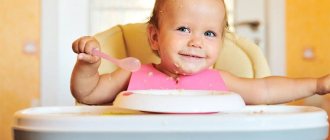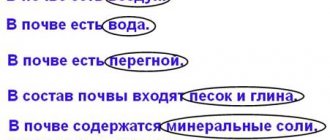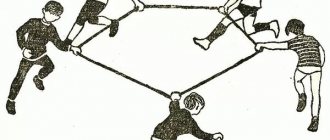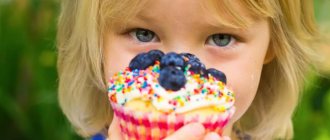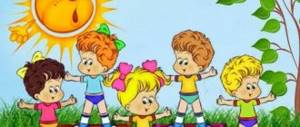Beautiful and simple Mushroom applique. Templates can be obtained for free. Details in my post here.
Hello! Today we are waiting for experiments with water for children . I don’t know how it is for anyone, but I myself really like conducting experiments. Remember, we recently talked about the opportunity to get acquainted with science, and in particular chemistry, through independent research. With the help of simple things, we opened up the whole world to our baby. And it was so nice to watch the baby’s admiration! Today we will continue to work in our scientific laboratory. And the “experimental” will be liquid.
I think the very first thing is to tell kids about such a phenomenon as the water cycle in nature . In this way, we will introduce the little ones not only to the complex structure of the Earth and life on it, but also to the normal “behavior” of water. This will be a great base to show what the liquid can do!
I will distribute the information in the article by age group in order to make maximum use of the existing knowledge and opportunities that home experiments provide for children. This is how we introduce the little ones to water:
- 3-year-old child learns about what shape water can have and what types it takes;
- for children of the middle group it is important to understand that in different situations water can behave unusually;
- and for the older group it will be interesting to “test” what the liquid is capable of.
Children will have to learn all this through experiments! Well, let's go?
Activities with kids
Let's show a 4-year-old the main property of liquid, that it takes on all kinds of shapes. How to do it? Take any transparent container and fill it with water. What could it be? For example, glass jars and glasses. But non-solid containers are also suitable: a plastic bag, a balloon, a medical glove. What form of water? it depends on what it is poured into. Conclusion: liquid does not have a specific shape.
Oil and water do not mix. Pour oil into a glass, then add water. Water can be colored. Water molecules don't like to mix with oil molecules. Even if you try to pour half oil and half water into a bottle, then shake it well, the oil will break down into small molecules, but will not mix with the water. Additionally, food coloring only mixes with water. It does not color the oil. If you add an aspirin tablet, you get bubbling lava. When you pour water into a bottle of oil, the water sinks to the bottom and the oil floats to the surface. This is the same when oil from a ship spills into the ocean. Oil floats on the surface of water because water is heavier than oil. Scientists say that water is denser than oil, and that is why the oil will not fall into the other flask.
Another simple experiment will introduce 5-6 year old to the three states of water: solid liquid and gaseous. Prepare in advance and freeze about a liter of it. It is advisable to do this in two metal containers. Melt one piece of ice in front of the child. Let your child compare and speak out. And return the container to the stove again. Cover it with a transparent lid. While observing, you can see how steam (the gaseous state of the liquid) and droplets have collected under the lid - this is condensation . Open the lid. Just first ask the baby where the steam came from if there was only water in the saucepan? But the experiment did not end there. Notice to the little one that the steam has risen. A piece of ice floats on the water. Using this example, tell us that the heaviest thing is water, then ice comes, and steam is even lighter than air. Conclusion: we got acquainted with the three states of water and learned that its weight changes at the same time.- Let's continue. And again the experiment with water and air . This time, with the help of liquid, we will see that air exists, although it is invisible. Take a deep bowl of water and a half-liter jar. Ask the little ones, is the jar empty? Let them answer. Now, turn the jar over and, holding it level, lower it to the bottom of the bowl. Why didn't the water fill the jar? What's stopping her? What is the jar filled with that doesn’t let liquid in? Conclusion: although we don’t see air, it is there. And we have now proven this.
Experiment No. 8 “Non-freezing salt”
Equipment: Ice cubes, salt, sugar.
Take three ice cubes and place them on a saucer. We sprinkle one with salt, the other with sugar, and the third with nothing. Let's see what happens to the ice floes. A piece of ice sprinkled with salt begins to melt much earlier than a piece of ice sprinkled with sugar. And a piece sprinkled with sugar melts faster than just a piece of ice. If you look closely at it, you can see that salt and sugar seem to “eat” holes.
Conclusion: Salt and sugar dissolve ice because sugar and salt crystals absorb moisture. Salt absorbs moisture faster than sugar. In winter, when there is ice, salt is sprinkled on the roads because it corrodes the ice, making it loose and non-slip.
Lessons with preschoolers and primary schoolchildren
Color the water in which the freshly cut white flower stands using paints. After some time, the baby will be convinced that the flower takes on the same color as we used to color the water.
Conclusion: water nourishes the flower, penetrating through capillaries into all parts of the plant. And accordingly, the qualities of the liquid are transferred to the flower.
Let's continue experiments on this topic. Let's take two glasses. One with water, the other empty. Roll the napkins so that they resemble a strip folded in half. Place one end of the strip in one glass, the other in another. In just an hour, the empty glass will be filled, and the one that contained liquid will be empty. And if you use three glasses, two of which contain colored water, then the third glass will contain mixed liquid. Conclusion: we investigated the phenomenon of absorption of liquid by solids.
Let's try to surprise the kids by giving them a quick freezing of liquid. Place pre-purified water in a half-liter plastic bottle in the freezer. Let's set the temperature to -19 (three stars). And leave the bottle in a horizontal position for 2-2.5 hours. When we get it, we need to be very careful not to start the process ahead of time. Let's call the kids and... let's hit the bottom of the bottle on the table. The water will instantly turn into ice. Conclusion. Pure H2O requires a lower temperature to freeze. But when the bottle hits, air bubbles appear in the water. It is thanks to them that the process starts.
Experiment No. 2 “Salt and sugar crunch”
Equipment: saucer with sugar, saucer with salt, two spoons.
Children pour salt into a saucer and press it with a dry spoon, after which they hear the salt crunch. They compare it to walking in the snow on a frosty day. Then they pour sugar into a saucer and press it with a dry spoon, after which they hear the sugar crunching.
Conclusion: Salt and sugar are made up of crystals. Therefore, when you press salt and sugar with a spoon, their crystals rub against each other and we hear a crunch.
Experiments with older children
- And again we will make the liquid behave unusually. Heat the pan over the fire and add a drop of liquid. What do we see? The water is dancing ! Before evaporating, the individual droplets bounce merrily. Conclusion: in fact, water evaporates. Only her first “portion”. And the steam that is formed from this lifts the drops above the surface and holds them.
Let's teach the little ones a new art? We use nail polish, the design of which should lie flat on the surface of the glassware. Take a bowl of water and drop different colors of varnish into it. Using a toothpick, mix to create a pattern. Now we lower the glassware into the bowl. The pattern remains on the dishes. Conclusion: water and varnish do not mix. The varnish just spreads across the surface. Using this technique, you can decorate various things, including manicures.
, what it is? Let's use an example to show kids how this force depends on the density of water. We will need salt, egg, glass and water. Drop an egg into a glass filled with liquid. A fresh egg will sink. Then add salt. The egg will float. Conclusion: as the salt dissolves, the density of water will increase, which means its buoyancy force will increase.
Ejection force- Let's paint the water with colors . Let the little one do it himself using ordinary paints and a brush. The choice of color is also up to the baby.
We will need a plate with a small indentation. Glue a piece of plasticine to its bottom, stick 4-10 matches into it. Fill the bottom of the plate with colored liquid. We light matches.
When they flare up, turn the jar over and lower it upside down so that the plasticine is in the middle. The matches will go out.
But at the same time, water flows upward and fills the jar. Conclusion: this is how we introduced the children to another phenomenon, pressure.
In the heated air, the pressure increased and some of the gas escaped. But, when the air began to cool, its pressure began to decrease, and the water began to rise.View this post on Instagram
????Interesting experience from @dipeshkova Age 3+ ??????????????????????????????????????? ?? One of our favorite experiences???????????? We tried a variety of colors - and every time we were delighted????????? Who said that cold and warm water cannot be distinguished from a distance????? . ????????We take two glasses (one with warm, the other with cold water) ????dye (I have blue and red) ????and a plastic card. Place a card on a glass with a warm (red) card and turn it over so that it “sticks” to the glass. Then we put one glass on top of another and carefully☝???? take out the card. Imagine our surprise when the warm and cold water did not mix - this is clearly visible from the fact that the colors remained the same???????? Do you know why❓ Hot water has less density than cold water. Therefore, the colors do not mix) Colors in water of the same temperature mix almost instantly???? _______________________ Put #for_children_smart so that your ideas get into our feed???????? . . . #experiments with children #experiments for children #experiments #developing by playing #with our own hands #at home #experiments with our mother #child development #playing at home #what to do with a child #how to entertain a child #experiment #creating with children #ideas for children #together with mom #science for children #science is great
Publication from ????IDEAS FOR SMART KIDS???? (@children_smart) January 13, 2020 at 10:51 PST
Of course, these are not all the experiments that can be shown to children in order to teach them that there are no simple objects, and to show by example how they interact with each other. Therefore, continue to surprise and educate your kids! And I will always help you with this. From you, subscribe and invite friends to the site, and from me there is always interesting information! That's all for today! Bye!
Experiment No. 5 “Skin Observation”
Equipment: two pieces of leather, two containers, water, salt, sugar.
1. Prepare a salt and sugar solution.
2. Place leather pieces in solutions for two hours.
3. After 2 hours, salt crystals formed on a piece of leather lying in a saline solution. The skin has taken on an ugly appearance. The white coating could not be cleaned off - the salt was deeply ingrained into the leather of the shoe. But the piece of leather lying with the sugar solution did not change.
Conclusion: salt really has a destructive effect on our shoes, so it is necessary to wash and polish our shoes with cream every day, which will help our shoes maintain their beautiful appearance.
Experience No. 10 “Painting with salt and sugar”
1.Equipment: Salt, sugar, watercolor paints, brushes, water, coloring book.
2. Equipment: Salt, sugar, colored cardboard, PVA glue.
3. Equipment: Painted salt and sugar, PVA glue, applique.
4. Equipment: Painted salt and sugar, PVA glue, white cardboard.
1. Paint the book with watercolors until the paint is dry, sprinkle with salt and sugar. After some time, remove the salt and sugar from the picture. We get beautiful stains in places where there was salt and sugar.
2. Take colored cardboard and draw any image with PVA glue. While the glue is still wet, sprinkle it with salt or sugar. After drying, shake off any remaining salt or sugar.
3. Take a pre-prepared application. Cover the design with PVA glue and sprinkle colored sugar or salt on top of the glue. After drying, shake off any remaining salt or sugar.
4. Take white cardboard and draw any image with PVA glue. While the glue is still wet, sprinkle it with colored salt or sugar. After drying, shake off any remaining salt or sugar.
Conclusion: Salt and sugar can be used to create creative works. Stimulate interest in creating creative works using salt and sugar as materials.
Experiment No. 9 “Coloring salt and sugar”
Equipment: Salt, sugar, plastic bag, gouache paints, food coloring.
Pour salt and sugar into plastic bags, add dye (gouache or food coloring) and tie the bag. Gently mix the salt and sugar inside the dye packet. Leave the contents until completely dry.
Conclusion: Salt and sugar can be colored with dyes.

